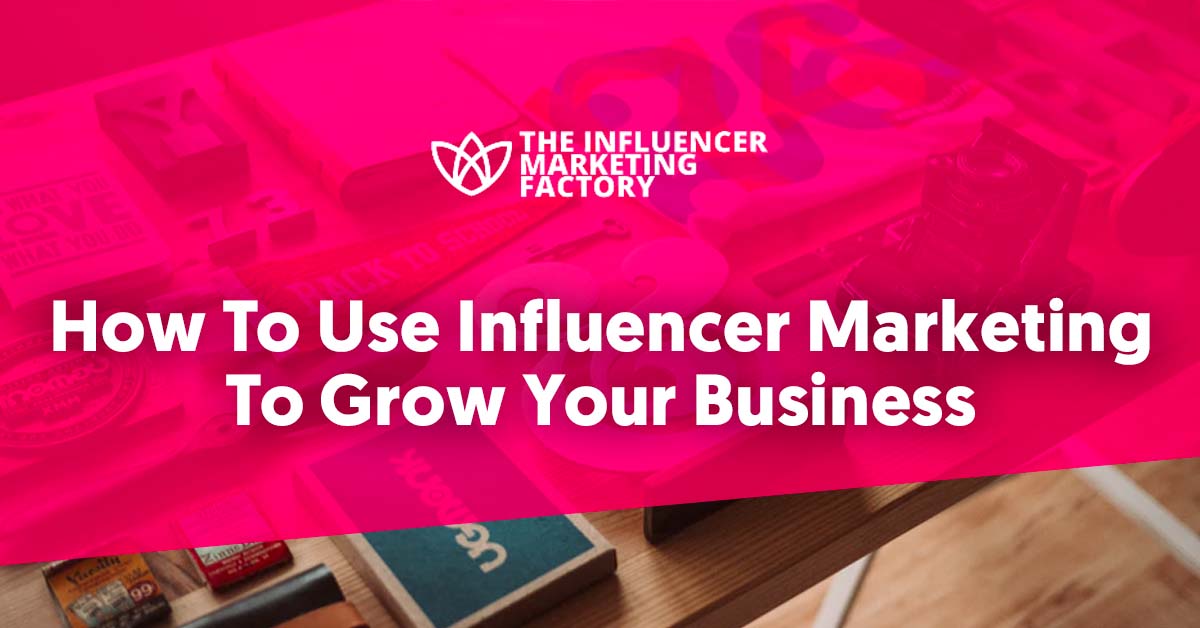
07 May How To Use Influencer Marketing To Grow Your Business
Summary
Introduction
Influencer marketing is undoubtedly one of the hottest talking points of modern business in 2021, and it is far more than a buzz phrase. It is one of the most powerful features that can be added to a company’s digital strategy and has the potential to completely transform the brand’s appeal, reach, and engagement.
The marketing method has become a huge business in itself, with the industry expected to hit $15 billion in 2022.
It revolves around the concept of gaining endorsements, product mentions, and other public referrals from popular social media personalities. In short, it brings a modern twist to the power of recommendation. As such, it establishes a trustworthy brand image while simultaneously introducing new audiences to the company. From a business perspective, this translates to more traffic, more social engagements, and more sales. Furthermore, the following stats highlight the reasons why all modern businesses should incorporate influencer marketing into their strategies;
- Research shows that businesses generate $5.20 for every $1 invested.
- 89% of marketers think influencer marketing is effective and 42% label it their top strategy.
- Two-in-three companies are actively increasing their influencer marketing budgets.
- Roughly half of all consumers rely on influencer recommendations when looking for brands and products.
- A huge 74% of marketers agree that it improves customer experiences.
Influencer marketing is now a massive part of building an effective digital strategy, not least because the demand and engagement from various demographics are growing by the month. Appreciating the benefits is one thing, but knowing how to successfully grow a business through influencer marketing is another altogether.
Set specific goals
The first question that any business owner should ask before introducing any new marketing strategy is, quite simply, ‘why?’.
Any successful influencer marketing campaign needs a purpose. Otherwise, the owner will never truly know whether the ideas and partnerships are working or not. Moreover, the company’s targets have to be more specific than simply “help the business”. Some of the most common goals include;
- Increase product sales,
- Increase engagement levels with visitors,
- Generate brand awareness,
- Capture email addresses,
- Increase followers on social media,
- Boost website traffic.
It is anecdotally and statistically shown that marketers now feel brand visibility is a more important challenge than conversions. Besides, 70% of purchases are influenced by brand interactions anyway. When used correctly, social media influencers can contribute heavily to the pursuit of new customers.
Whatever goals are selected, companies also need to track the progress of each campaign through a range of Key Performance Indicators (KPIs). The purpose of monitoring the influencer marketing partnership is to ensure that campaigns are effective and easily altered to maximise future efficiency. In turn, this enables brands to reach all set goals in a timely and cost-effective fashion.
A report by Linqia states that 90% of marketers use engagement as the KPI for monitoring influencer marketing while 59^ measure clicks, impressions, and conversions. Additional KPIs include audience alignment, product sales, and Cost Per Acquisition (CPAs).
Regardless of the brand’s size or industry, setting goals and knowing how to monitor progress towards them will provide the platform to build upon.
Choose the right influencer for your brand
In order to unlock the full potential of influencer marketing, it is important to be aligned with an influencer that can actually help the company reach its goals is absolutely crucial.
Whether scouting influencers through DIY methods or using outsourced platforms and agencies, like 54% of marketing teams prefer, decision makers must use the following questions for guidance;
Does the influencer reach a sizable audience?
Brands don’t need to find influencers that have millions of followers. In fact, most businesses find that micro-influencers with just a few thousand fans perform better because they share a closer connection with their supporters. Nonetheless, if their recommendations and shoutouts aren’t seen, they simply cannot have an influence on consumer behaviours.
Does the influencer share a similar audience to the business?
Relevance is another key feature to consider. There is little point in reaching five million 12-year-olds if the company is trying to promote an alcoholic drink, for example. Finding an influencer who boasts a similar audience demographic to the brand’s is key. Owners may find that age, location, gender, personal tastes, and financial backgrounds all play crucial roles.
Does the influencer provide quality content?
When linking up with an influencer, they will become a representative of your brand. Therefore, decision makers need to know that creators will produce high-quality content. One-in-three companies still don’t have a dedicated strategy in place, which makes it very hard to determine who can deliver the right type of content. The right influencer should be engaging, entertaining, and authentic.
It will also be necessary to screen the influencer for reliability, frequency, and shared values. For businesses, though, it’s equally crucial to gain a deeper understanding of your demographic. Knowing the audience(s) that will value products and services, along with focus groups and customer questionnaires, gives brand managers a better idea of what they are looking for. Using the questions above should help identify who that is!
Choose the right platform
Knowing who will reach a relevant audience is one thing, but knowing where to reach them is another altogether.
Almost 4 billion people worldwide have at least one social media account. While the vast majority are active on more than one platform, it’s important to recognise that different demographics consume social media in varying ways. Some of the key audience breakdowns across different platforms include;
- Statista shows that 56% of Instagram users are 18-34.
- Statista also shows that 68.5% of the Twitter share is male.
- Snapchat is dominated (75% of users) by the 13-34 age range.
- Facebook is used by over 86% of people earning $100k or more.
- Over half of all B2B decision-makers use Youtube for research.
An understanding of social media demographics can be supported by further insights into the type of content that is consumed and how long for. All this info will help determine which platform(s) brands should want an influencer to use. After all, setting up campaigns on the wrong platform will reduce engagement, growth, and ROIs.
Once the right platform has been identified, managers should also confirm that the influencer uses relevant content to engage the audience. Some examples include:
Instagram – the use of Instagram Shopping, IGTV, Stories, and Instagram Live are all shown to be great ways to engage audiences on the visual platform. Mentioning and tagging the brand is highly useful.
YouTube – the use of informative long-form content is ideal. This could incorporate ‘how to’ videos and explainer videos, as well as Q&As. Brand takeovers where influencers and the brand appear in some form of behind-the-scenes show can work wonders too.
Twitter – due to its ‘newsy’ style, the platform is best used by content producers that promote brand events, promotions, and breaking news. As well as Tweets, Fleets can now be used to give video insights.
Conclusion
In the world of digital marketing, influencer marketing is now one of the most important ingredients in the recipe for success. However, businesses can only achieve success when they align themselves with content creators that know who to reach and where to reach them while also maintaining the ability to stay up to date with the latest consumer trends.
Businesses require a lot of preparation to master the process. But when they do, the results are simply phenomenal.
____________________________________________________________________________
Rebecca DiCioccio is the Marketing Manager at Paperform. Outside of work, Rebecca can be found exploring the outdoors or with a book in hand. Rebecca’s background in copywriting and keen interest in SEO and digital marketing mean she understands the importance of staying up to date with the latest trends in a dynamic and ever changing industry.

